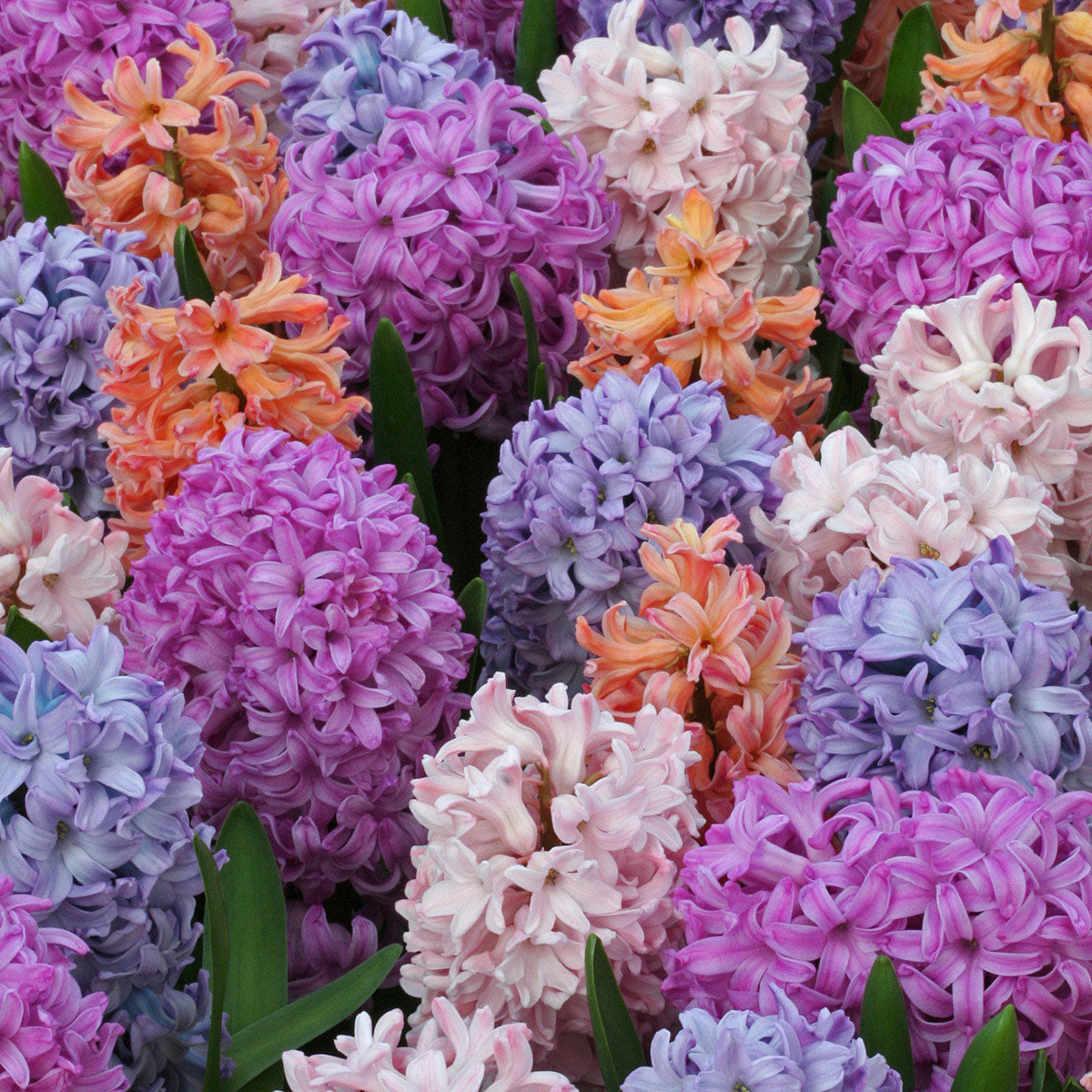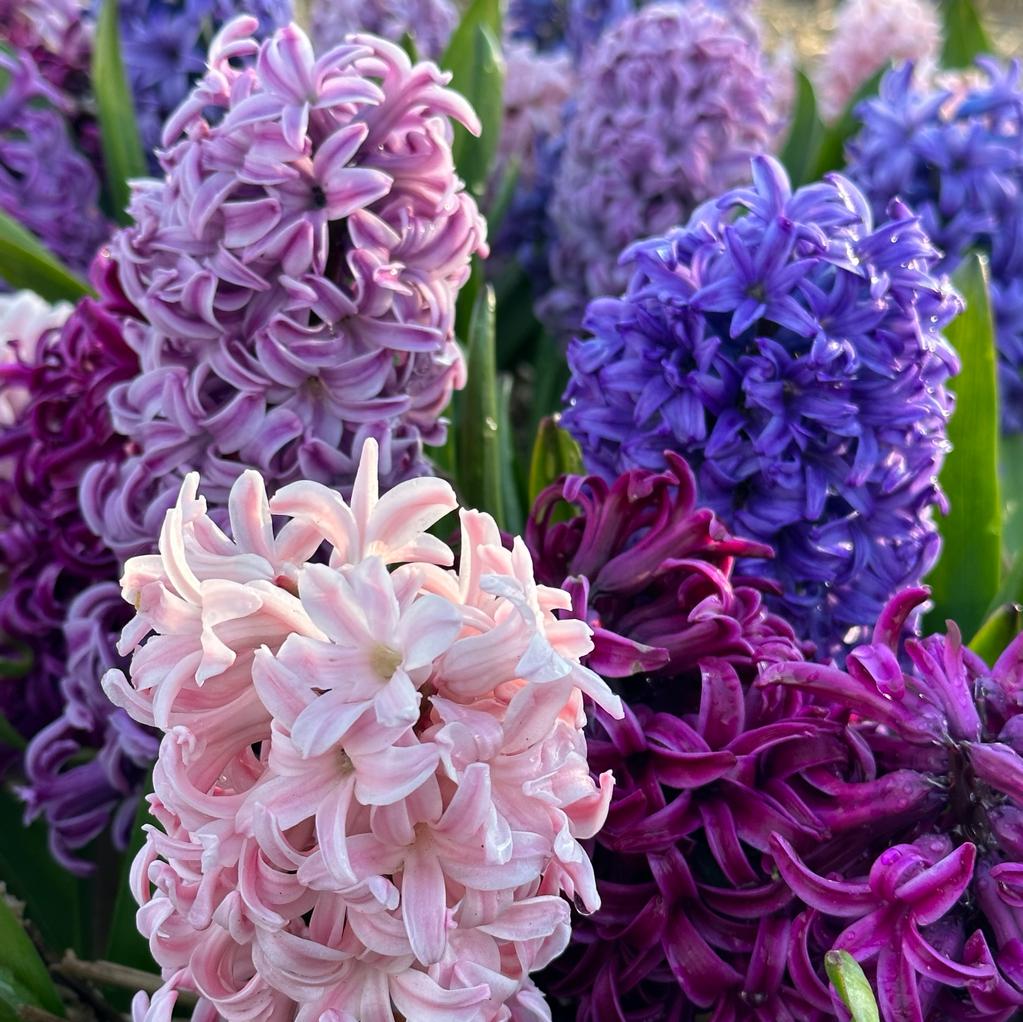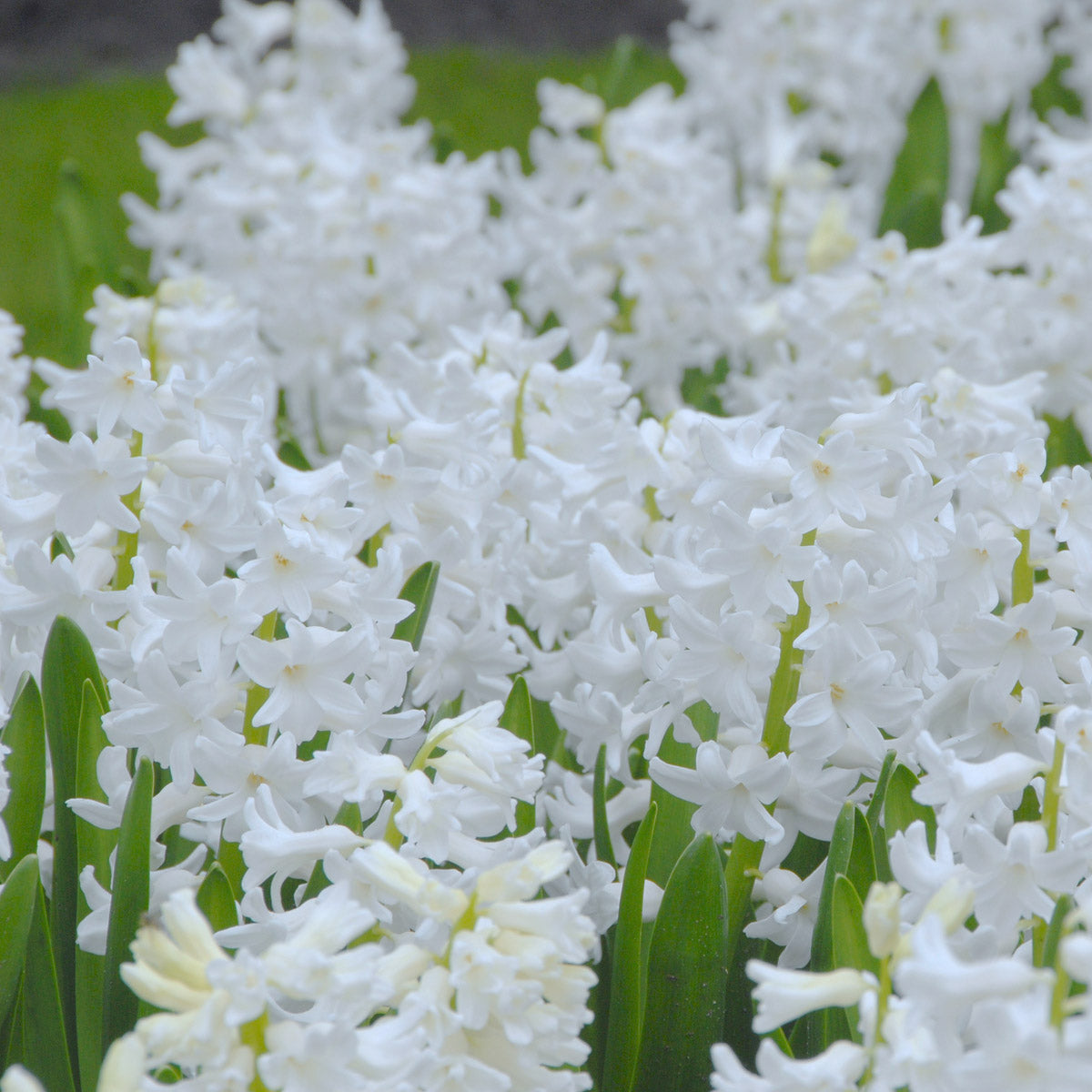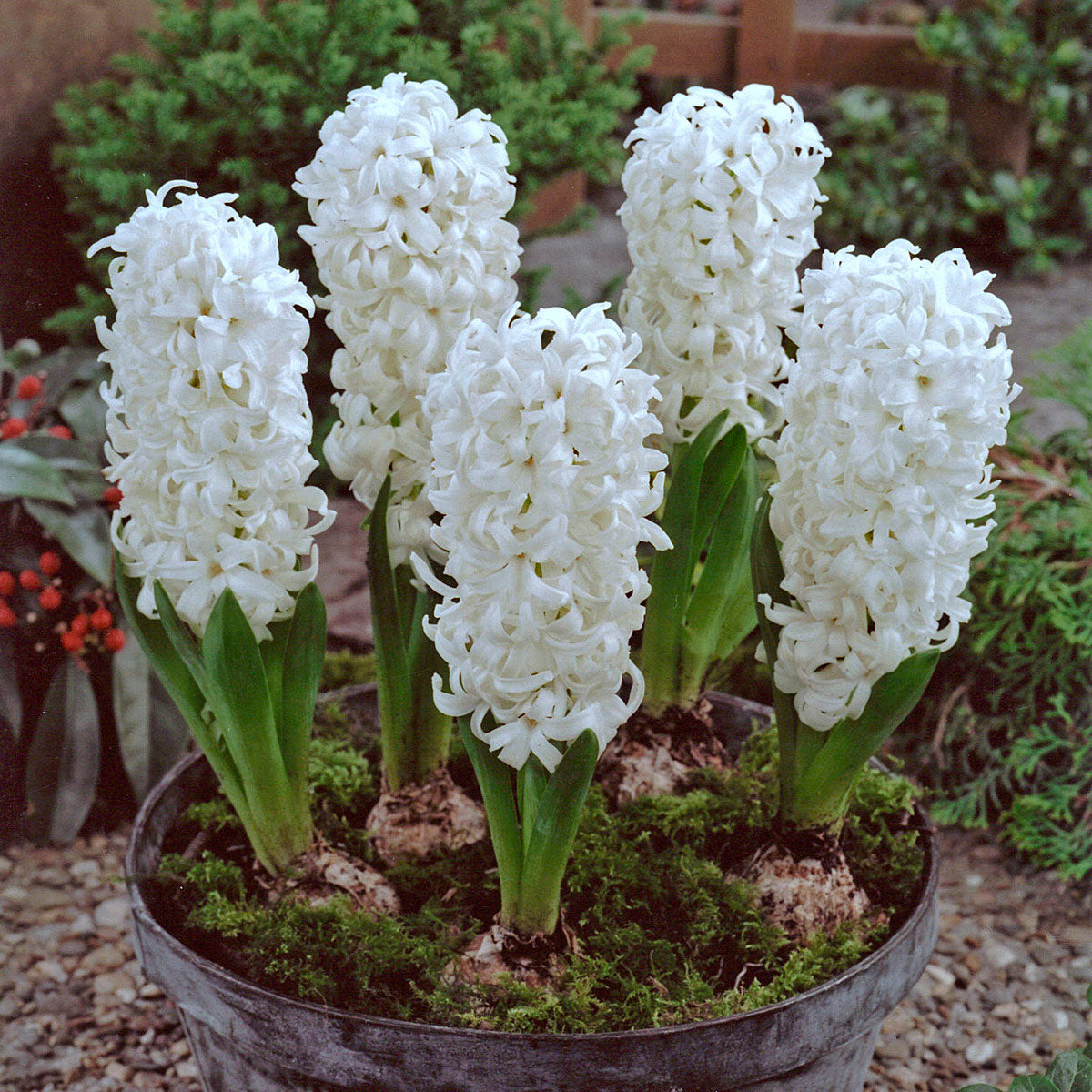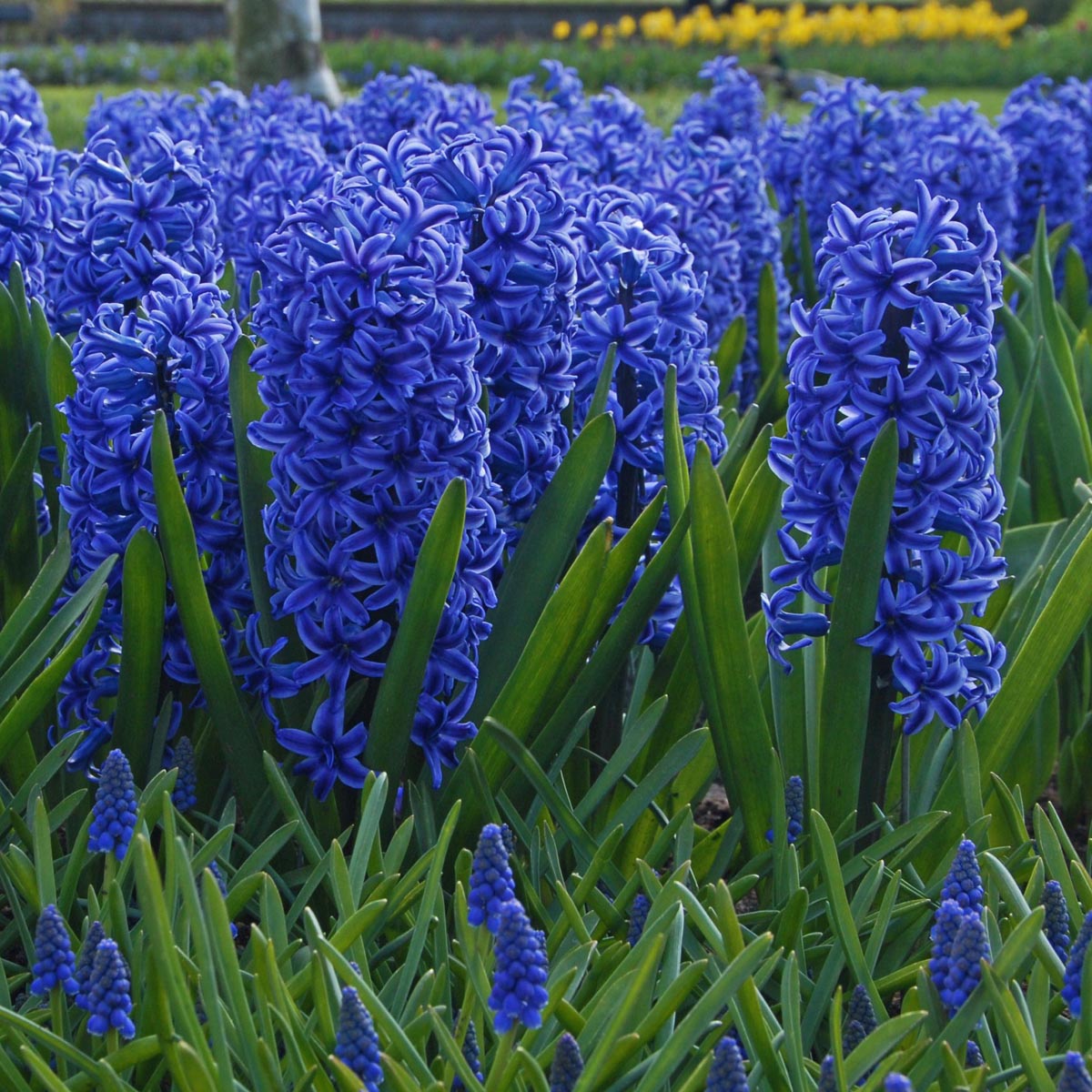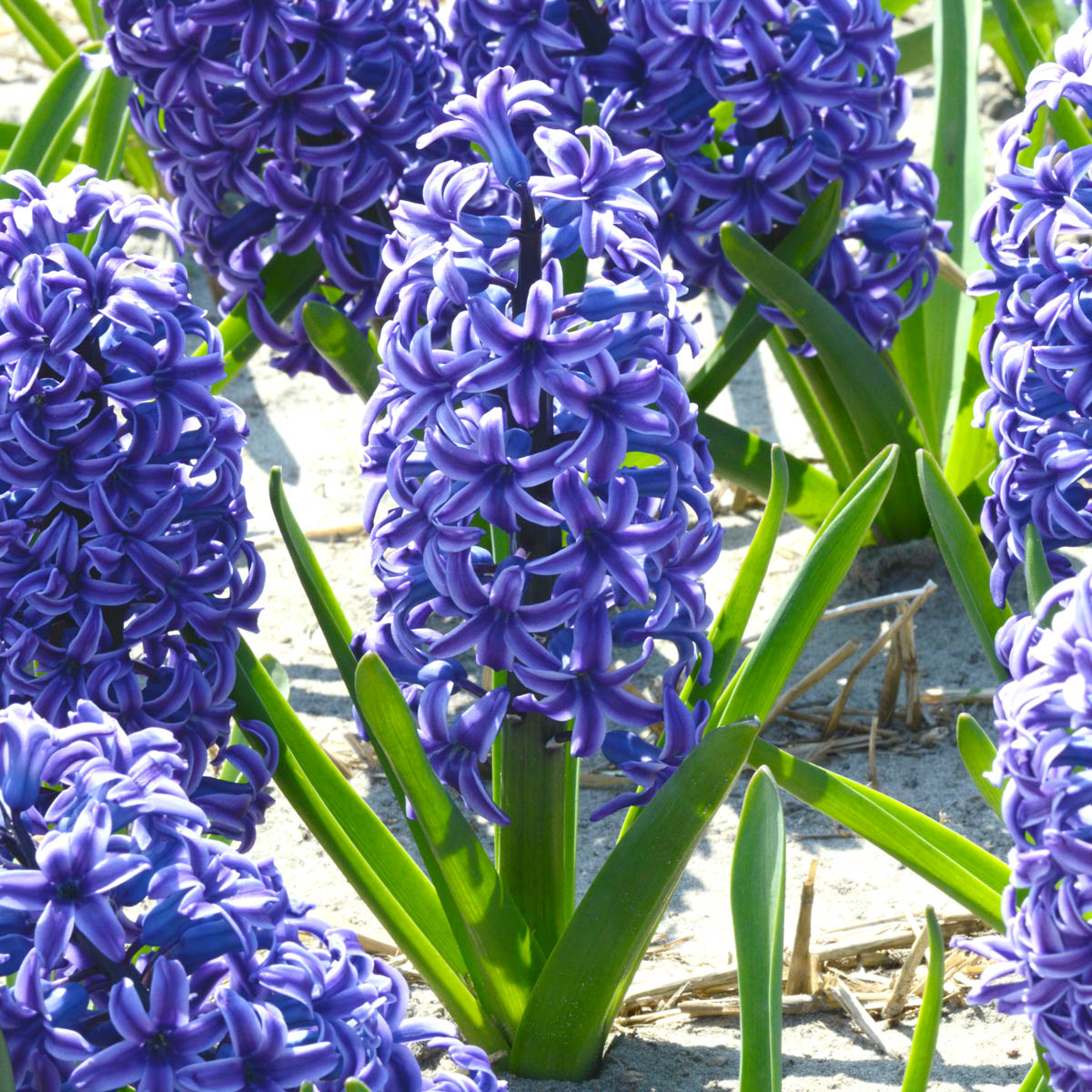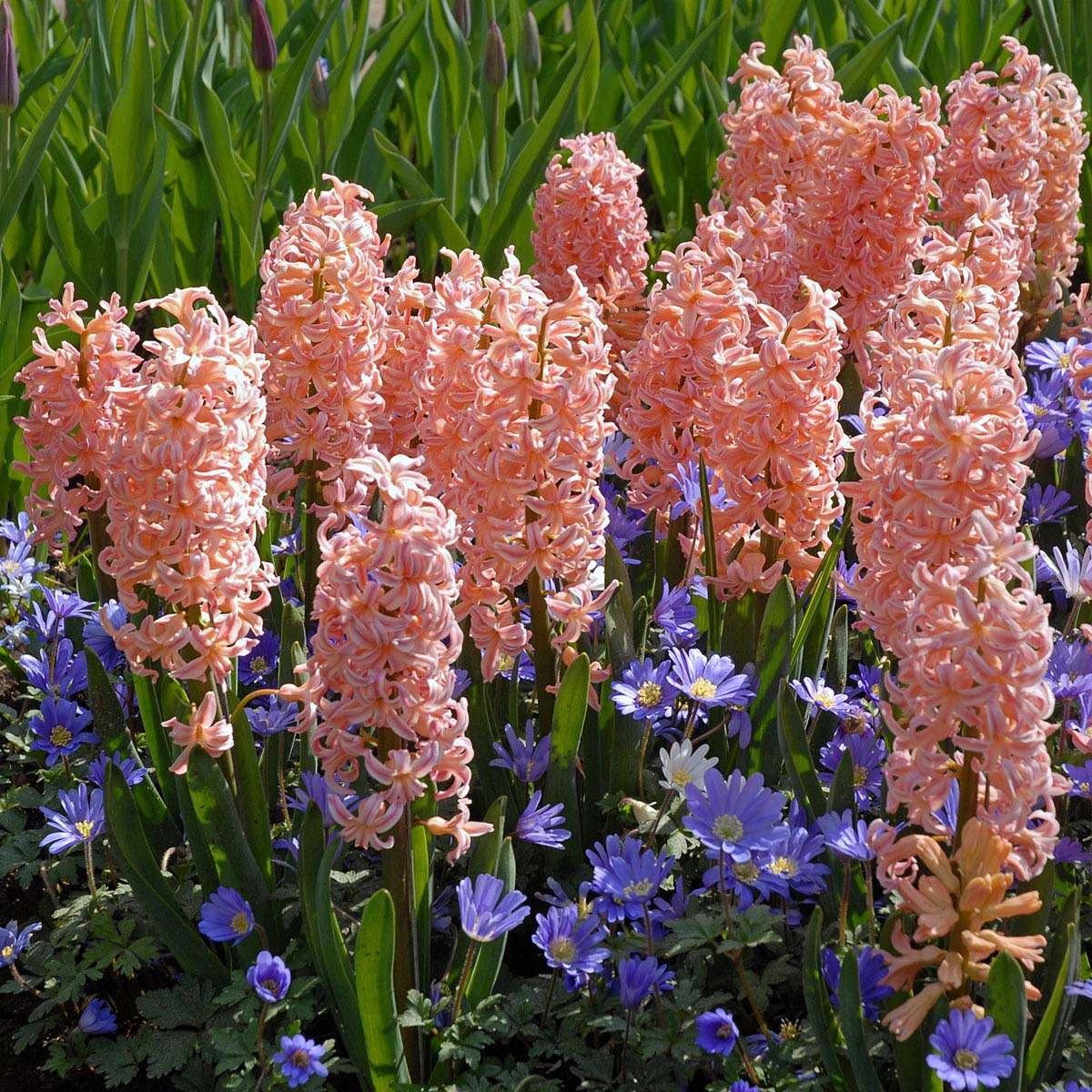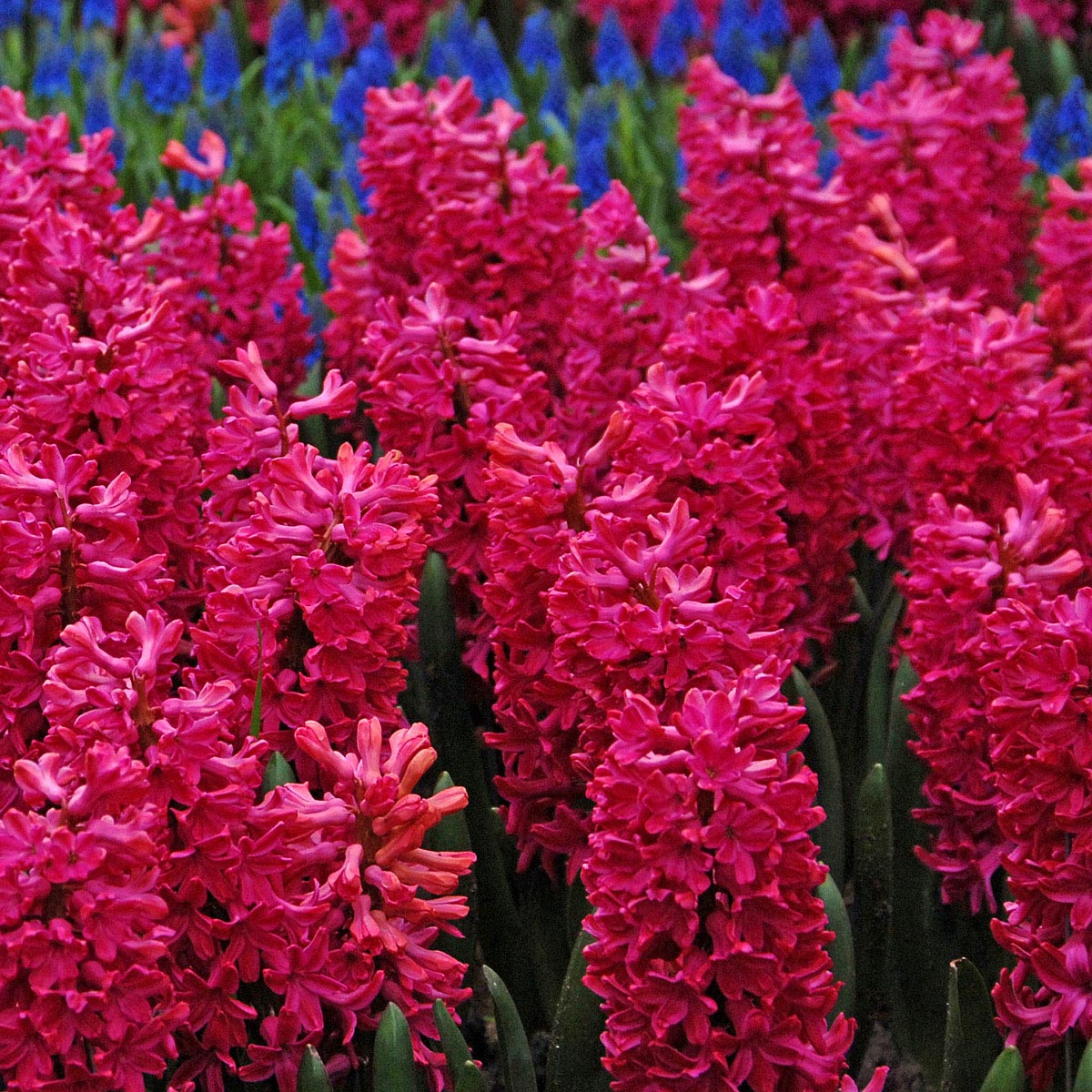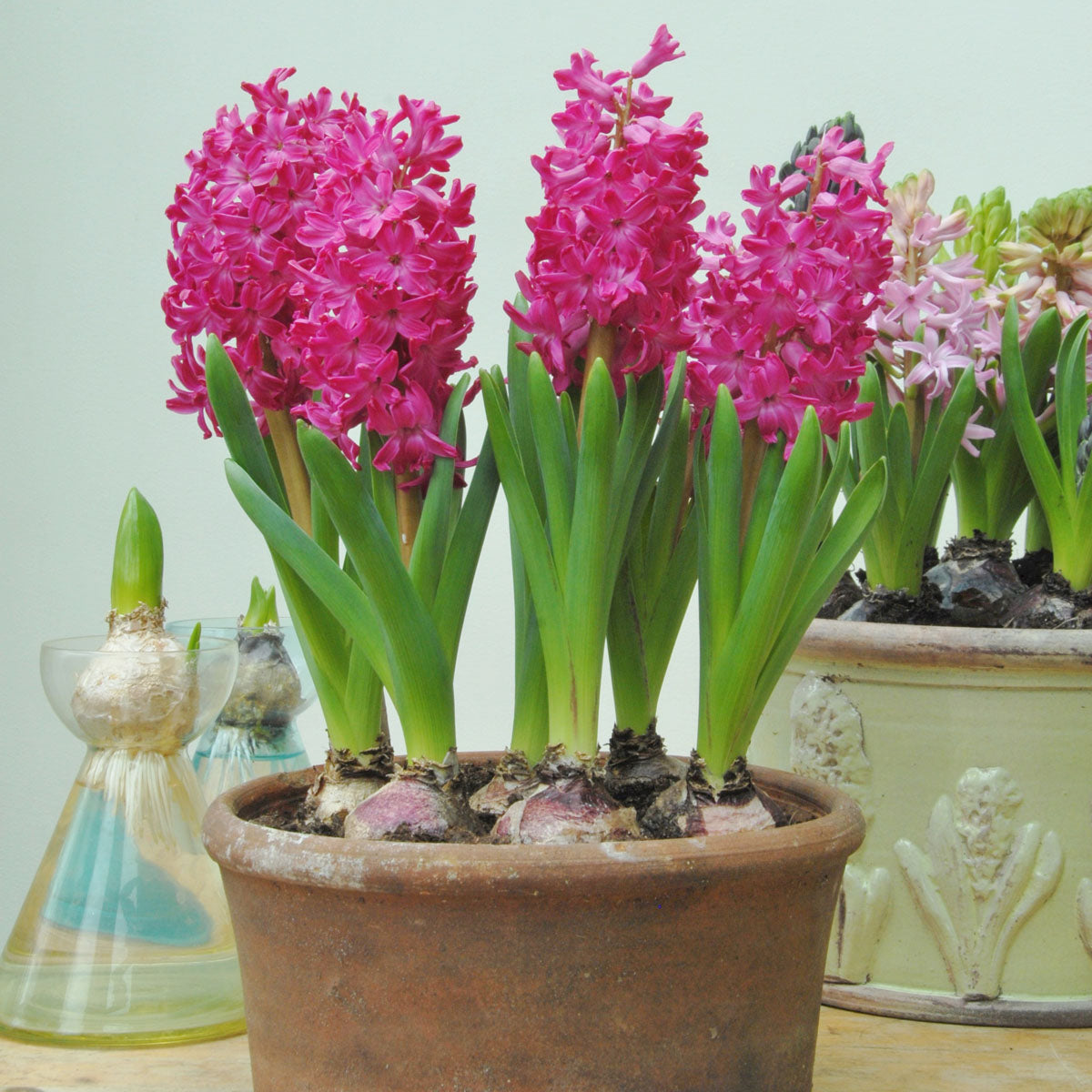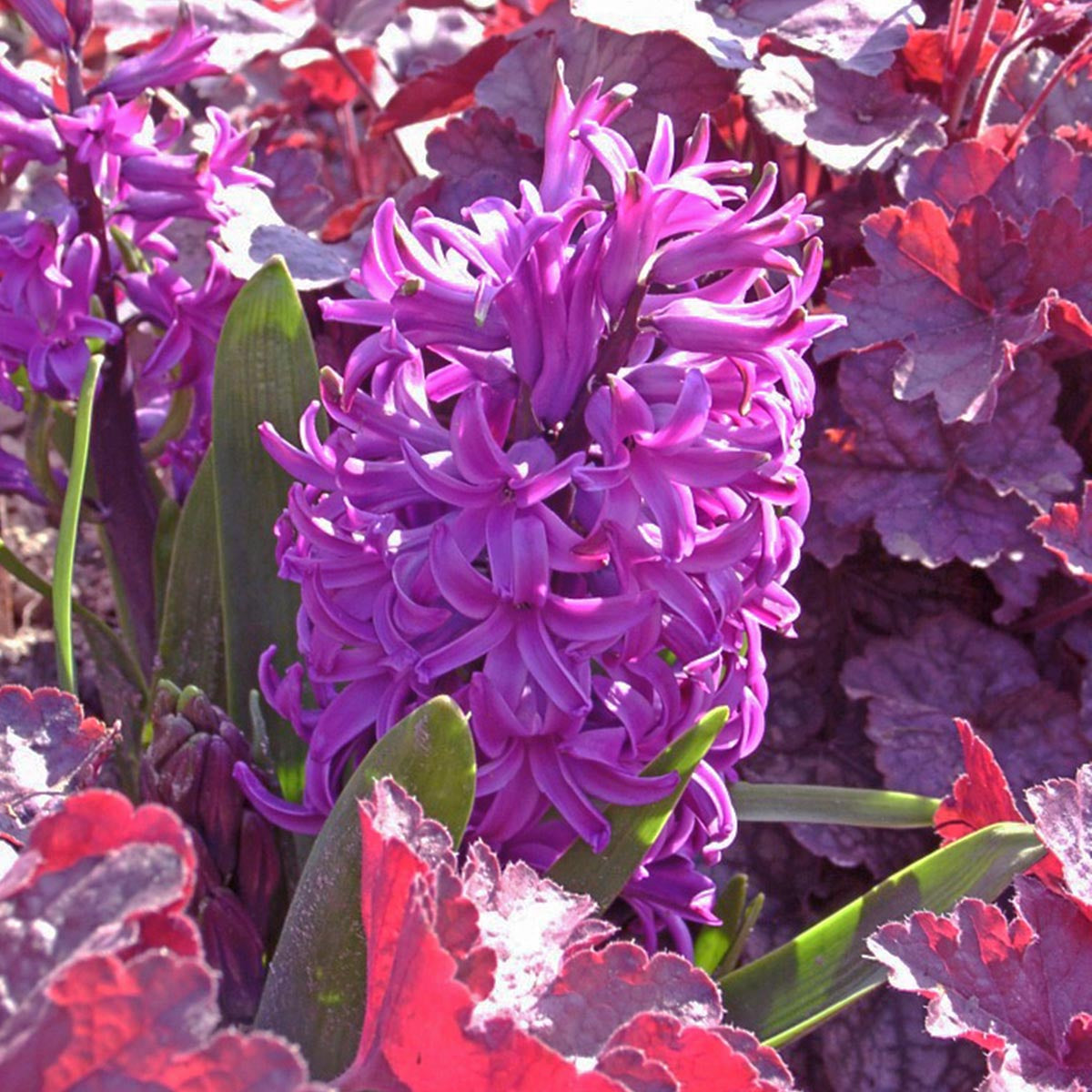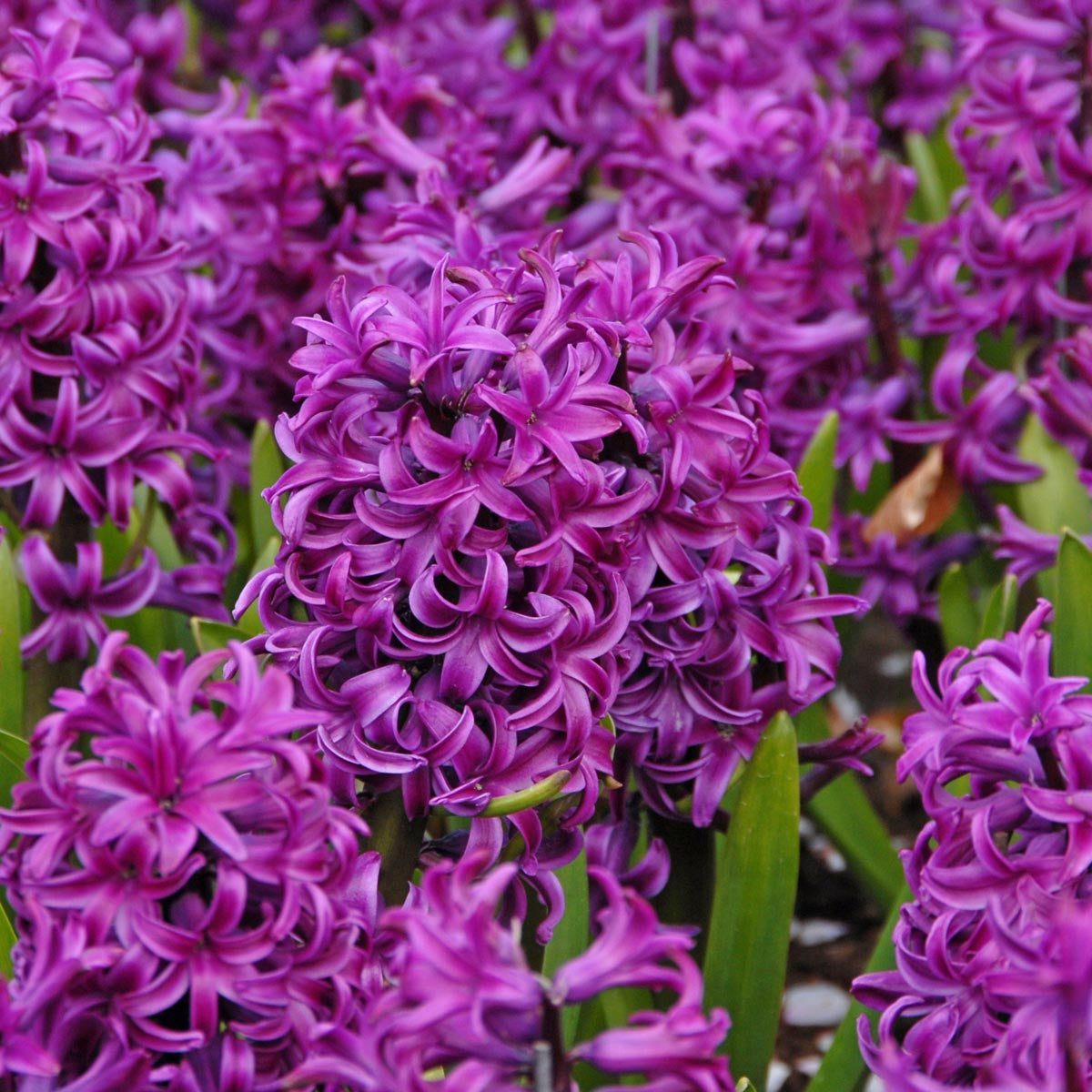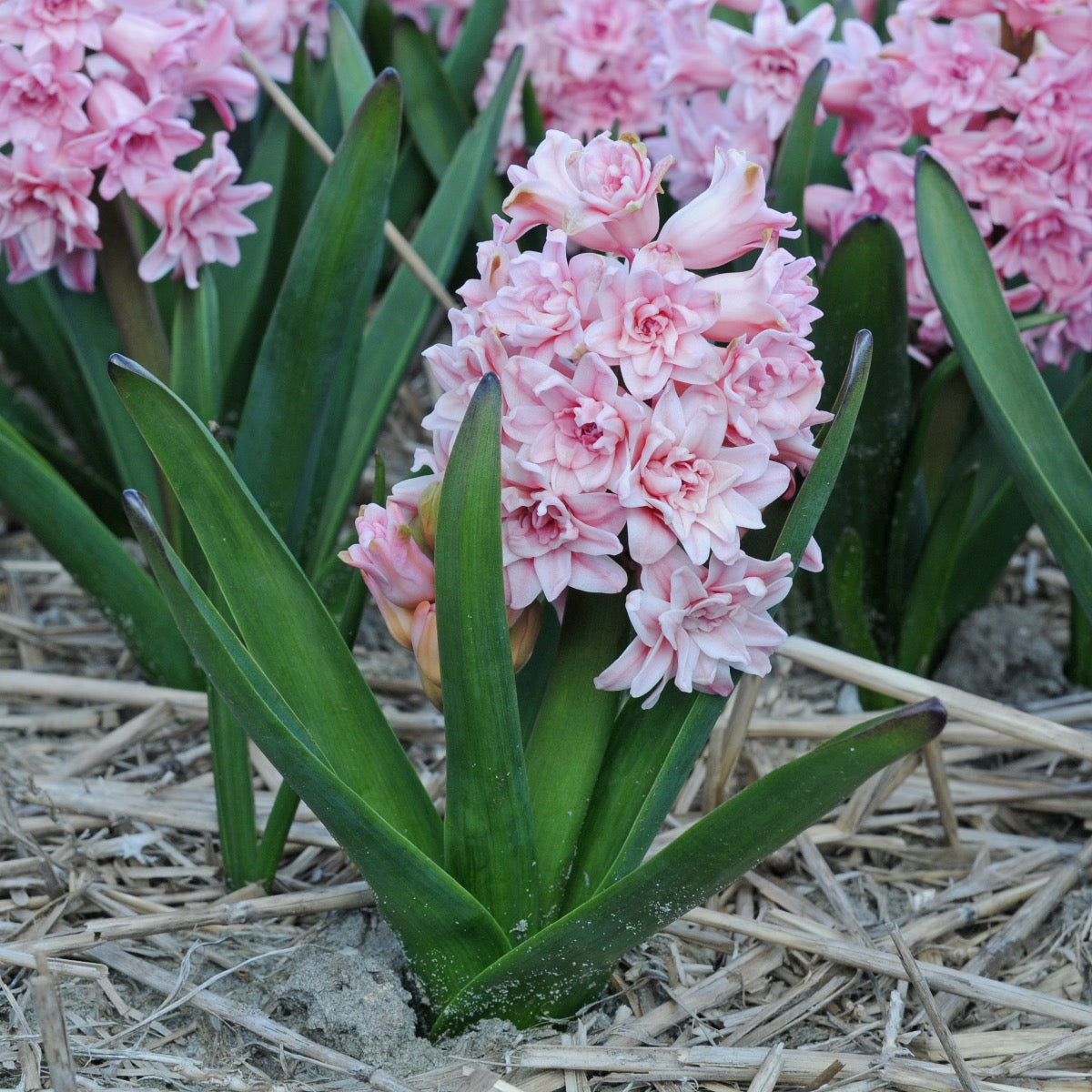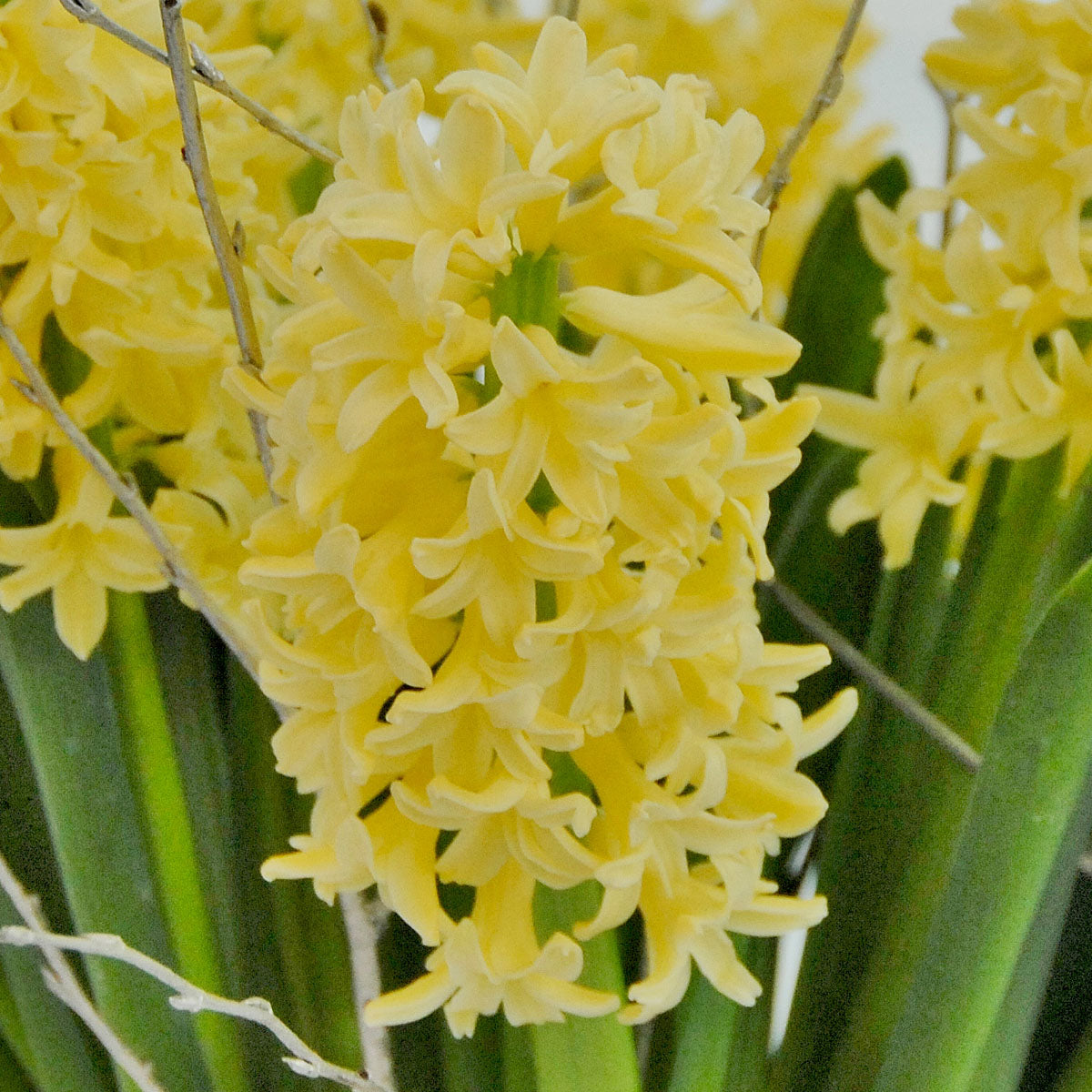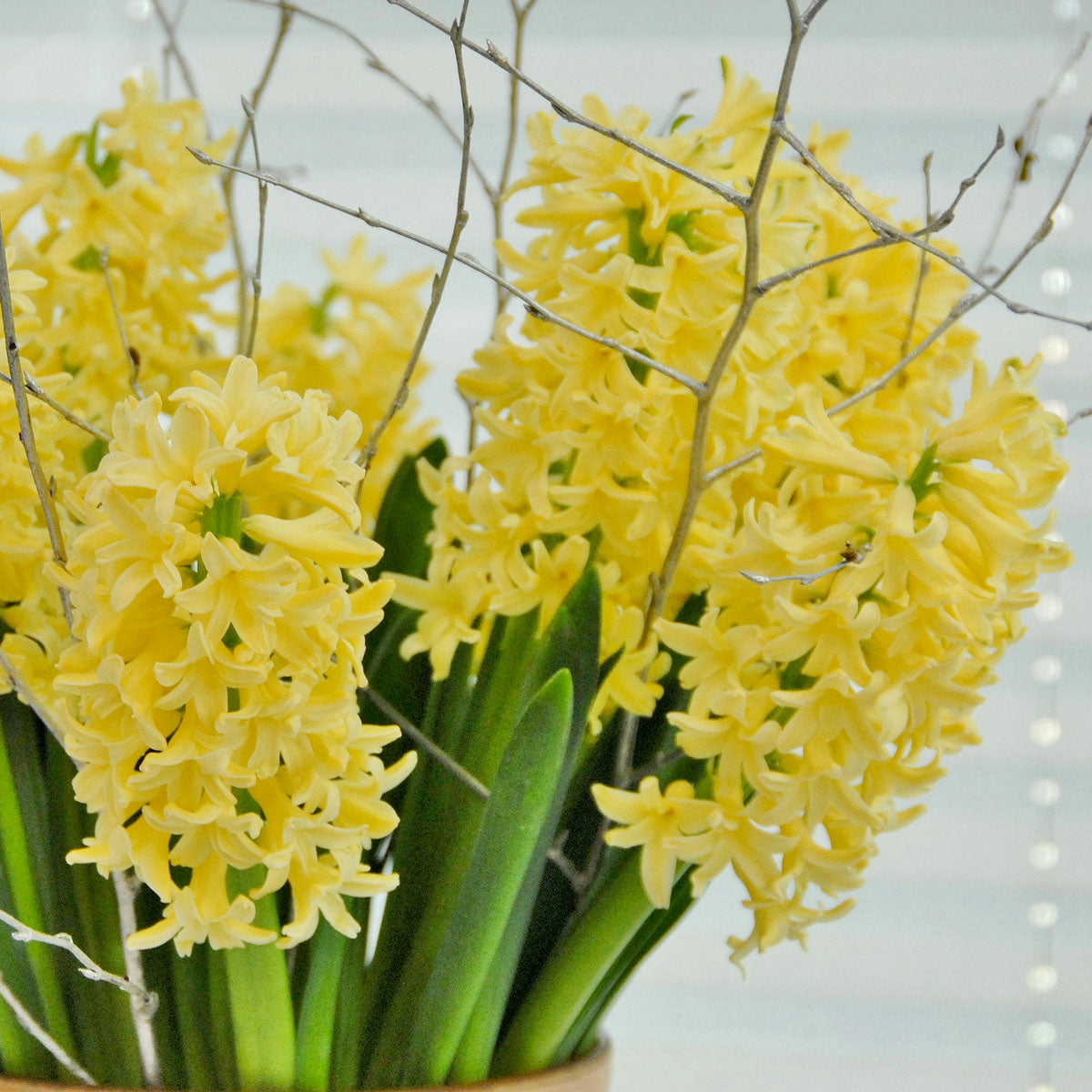A Hyacinth in the garden needs little care and does well in Dutch gardens, but is also very suitable for (indoor) planting in a pot. In both cases it is important that the soil is well-drained. In the garden this may mean that you can dig some extra loose soil such as peat through the soil. Especially if your garden soil is naturally somewhat heavier. With a pot you must ensure that the excess water has somewhere to go. Pots with holes at the bottom are very suitable for planting hyacinths.
Hyacinths are often planted in clusters of 3 to 5 bulbs of the same species. These bulbs may be placed so close together that they are not quite touching. When choosing a species, it is useful to pay attention to the place where you want to plant your hyacinths. Species of hyacinths that bear many flowers are usually more suitable for planting in a pot, because they can quickly fall over in the garden. Species with fewer nails (flowers) are also less heavy and can therefore stand well in the garden.
The flower clusters of the hyacinth
The flower clusters of the Hyacinth are large and full in the first year after planting, but will become somewhat thinner in the following years. Where the flower cluster of the Hyacinth can easily carry 50 flowers in the first year, there will only be 15 to 20 in the following years. This certainly does not have to be less beautiful, because the somewhat looser flower cluster gives the Hyacinth a somewhat more natural appearance.
The enormous full flower clusters that the Hyacinth can produce in the first year are usually also the reason that gardeners prefer not to plant the Hyacinth. They fall over and that looks very messy in the garden. With a little knowledge, this falling over of the Hyacinth flowers can be prevented quite well. You can read more about this under Buying Hyacinths .



Planting hyacinths in frost
In areas where it can freeze hard in the winter, always plant the Hyacinth bulb a little deeper than you are used to planting flower bulbs. Cover the bulb with at least 10 centimetres of soil and preferably also cover it with some leaf mould or garden peat. Especially in the first year after planting, the Hyacinth can freeze if there is a severe frost shortly after planting. Once settled in the garden, Hyacinths seem to be less sensitive to freezing.
The Hyacinth is also an excellent flower bulb to use in pots and flower boxes. Both by type, with one colour in a pot, and mixed they are able to give you an explosion of colour. But you can also combine the Hyacinth very well with other bulbous plants such as the tulip and the daffodil . If you want to keep the Hyacinth as a main course, it also looks very nice if you combine the flower with the white or blue Anemone blanda . By adding this cheerful flowering tuber you create a small flower paradise.
But here too you have to make sure that they do not freeze. Frost can easily penetrate deep into a pot or flower box and Hyacinth bulbs cannot withstand severe frost. Also always make sure that the pots or flower boxes do not dry out. An experienced gardener knows this, but unfortunately I see far too often that beautifully planted pots with flower bulbs or other plants are forgotten in the winter period and therefore dry out. The long-awaited floral splendor in the spring is then a lot less beautiful than hoped for.

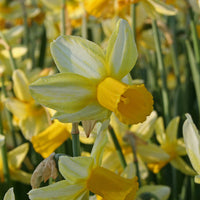



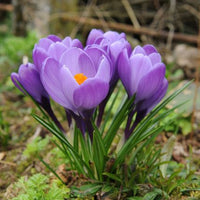




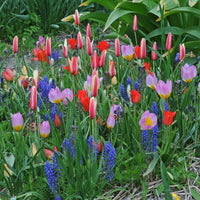


 Deutsch
Deutsch English
English
